Friday, 8:00am
24 November 2023
Dotting the ‘i’
‘Phil Baines shows us how to revel in the joy of graphic design.’ Quentin Newark reviews ‘Extol’
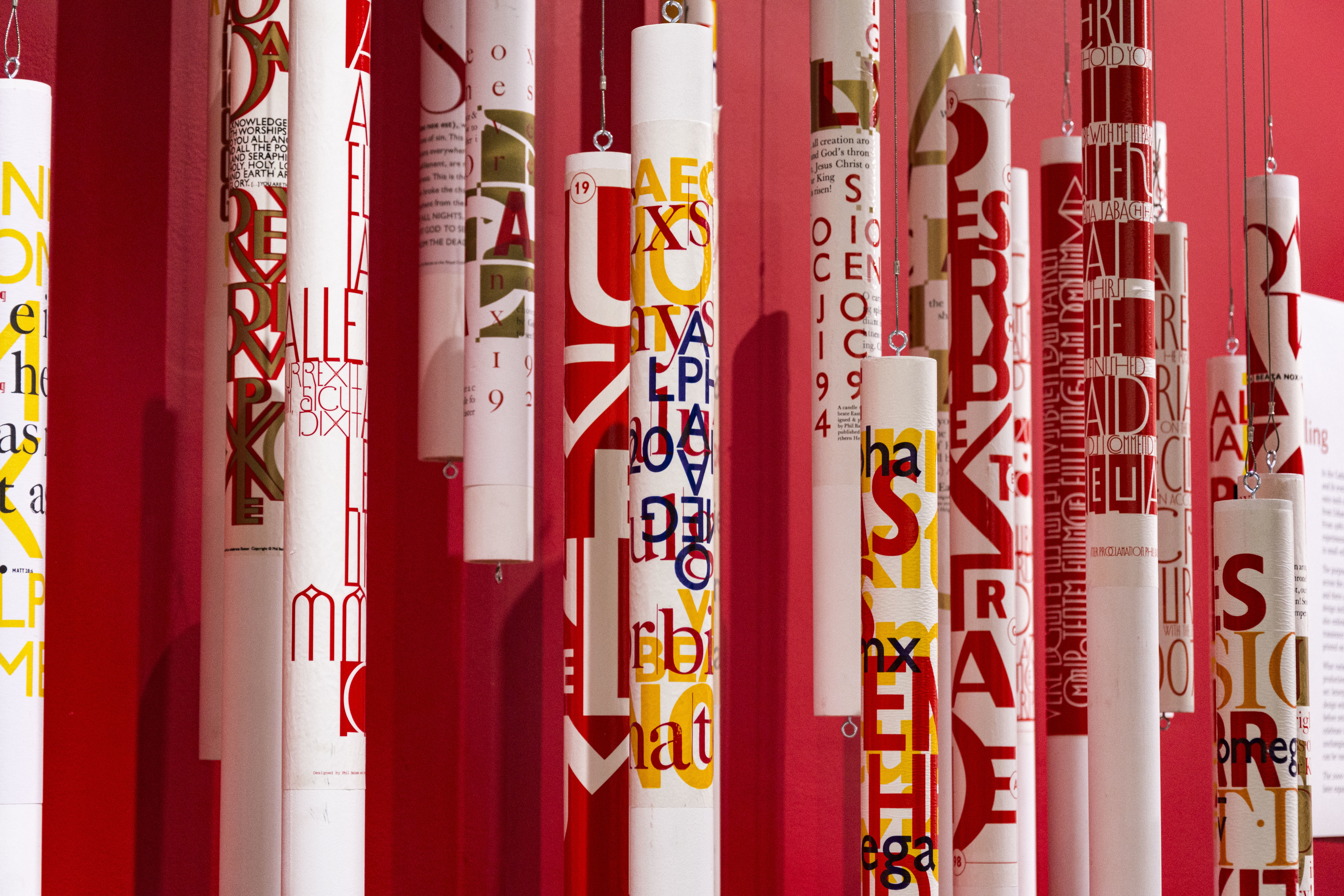
I have a confession to make, writes Quentin Newark.
I am a contemporary of Phil’s. To those younger than me, what I am about to say may mean little. But in the 1990s there was a schism in graphic design. Let’s simplify it to the ‘Idea-based Neo-Modernists’ vs the ‘Design-is-Art Deconstructionists’. Legibility combined with a simple ‘idea’ (of which the greatest proponent and patron saint was probably Bob Gill) vs Painterly Pixels with Layers and Blur (whose patron saint may be dingbat-wielding David Carson).
Extol: Lethaby Gallery entrance.
Top. Detail of Paschal candle display. Photographs by Jamie Johnson.
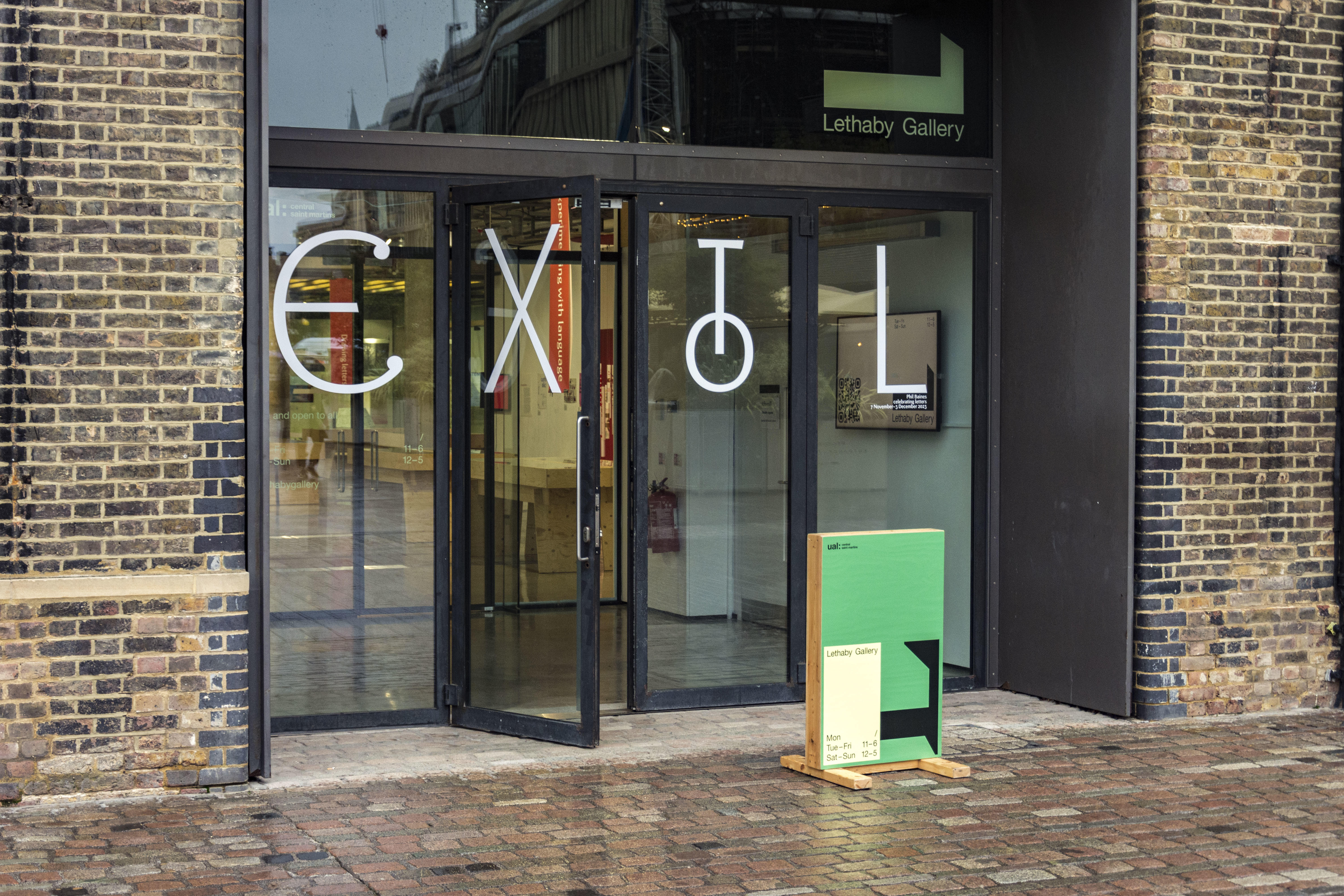
I know Phil Baines, the subject of ‘Extol’. I worked with him on Phaidon’s ‘Art & Ideas’ book series. We took Alan Fletcher’s concept, and turned it into practical books. I detailed the covers and the front end, Phil took on the vast end matter. Later, I went on one of his typographic walks around Bloomsbury admiring the historic signs (you can take the tour too, see the foot of this blog post).
Portrait by Anthony Oliver from Eye 69, 2008.
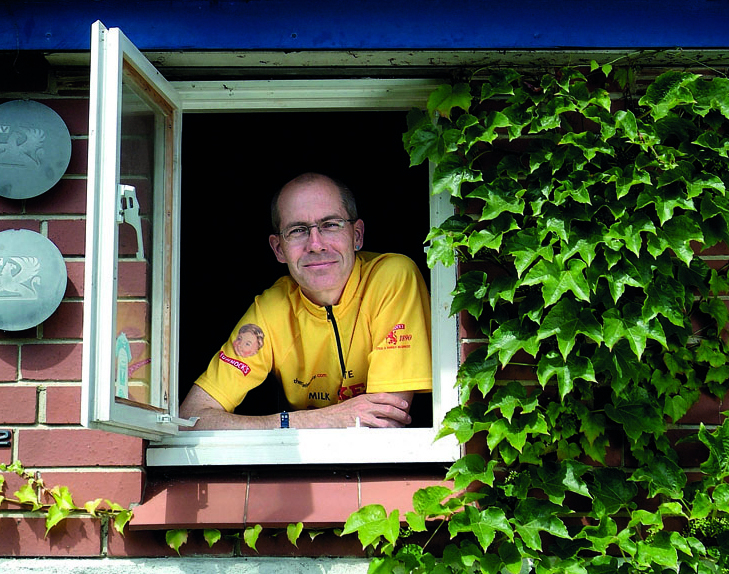
Even so, for years, I saw him as firmly in the painterly camp, merely interested in effect. How wrong I was.
This exhibition shows an inspiring designer, teacher, historian, thinker of great flexibility. The work is laid out on the walls of the spacious Lethaby Gallery, and in a series of pine vitrines. Red banners divide it up into parts: ‘Book design’, ‘Collaborative practice’, ‘Drawing letters’, and so on.
Installation view of ‘Extol’ by Jamie Johnson, with display of Paschal candle designs on the right.
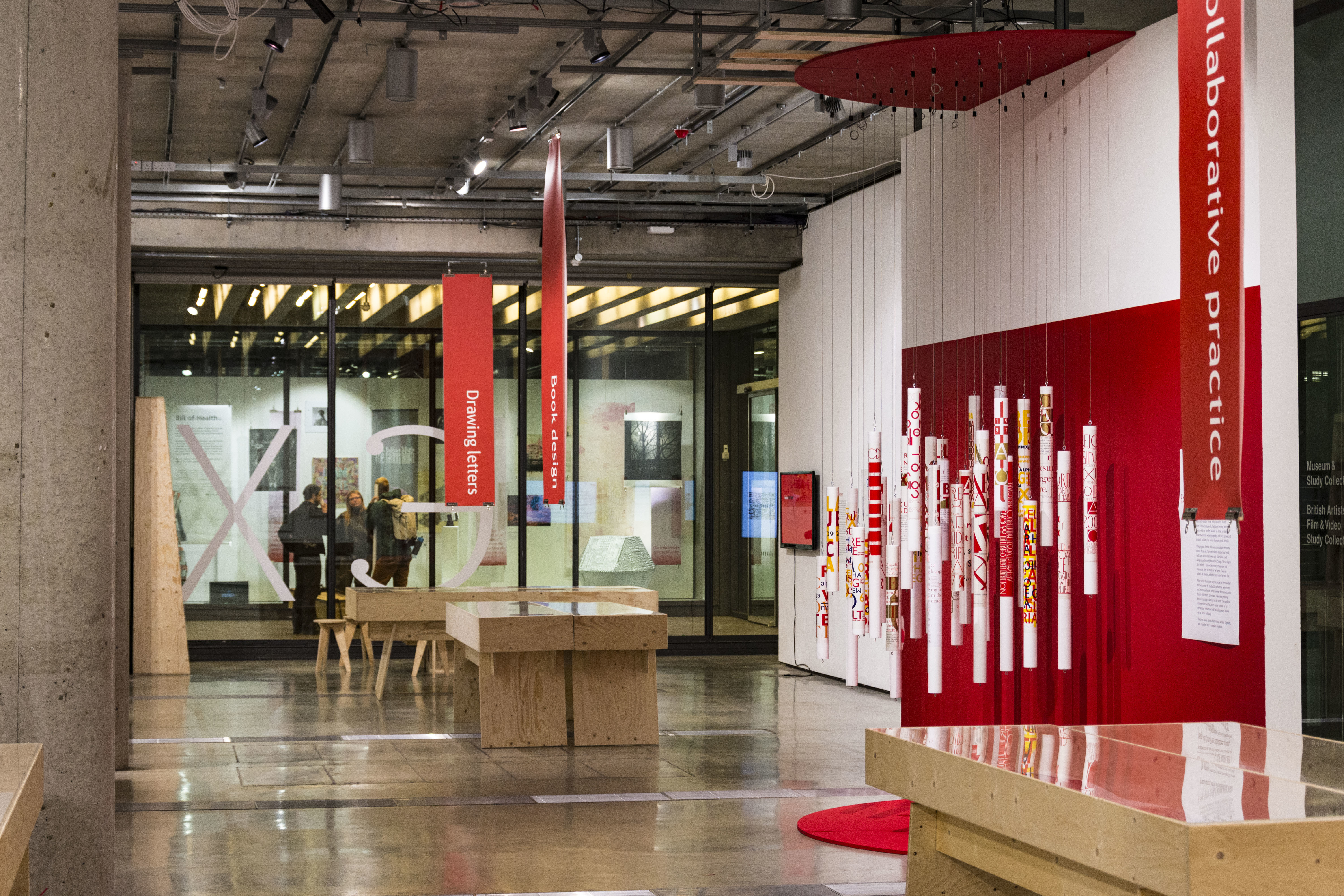
Phil’s sketchbooks are the place to start. Extraordinary little A6 works of art. Each spread is a stunning composition, painted, drawn, collaged, type and image mingling into a landscape poster, spread after beautiful spread, plotting his life; visits, briefs, walks, ideas.
Phil Baines’s sketchbooks, 1980s. Photograph by Jamie Johnson.
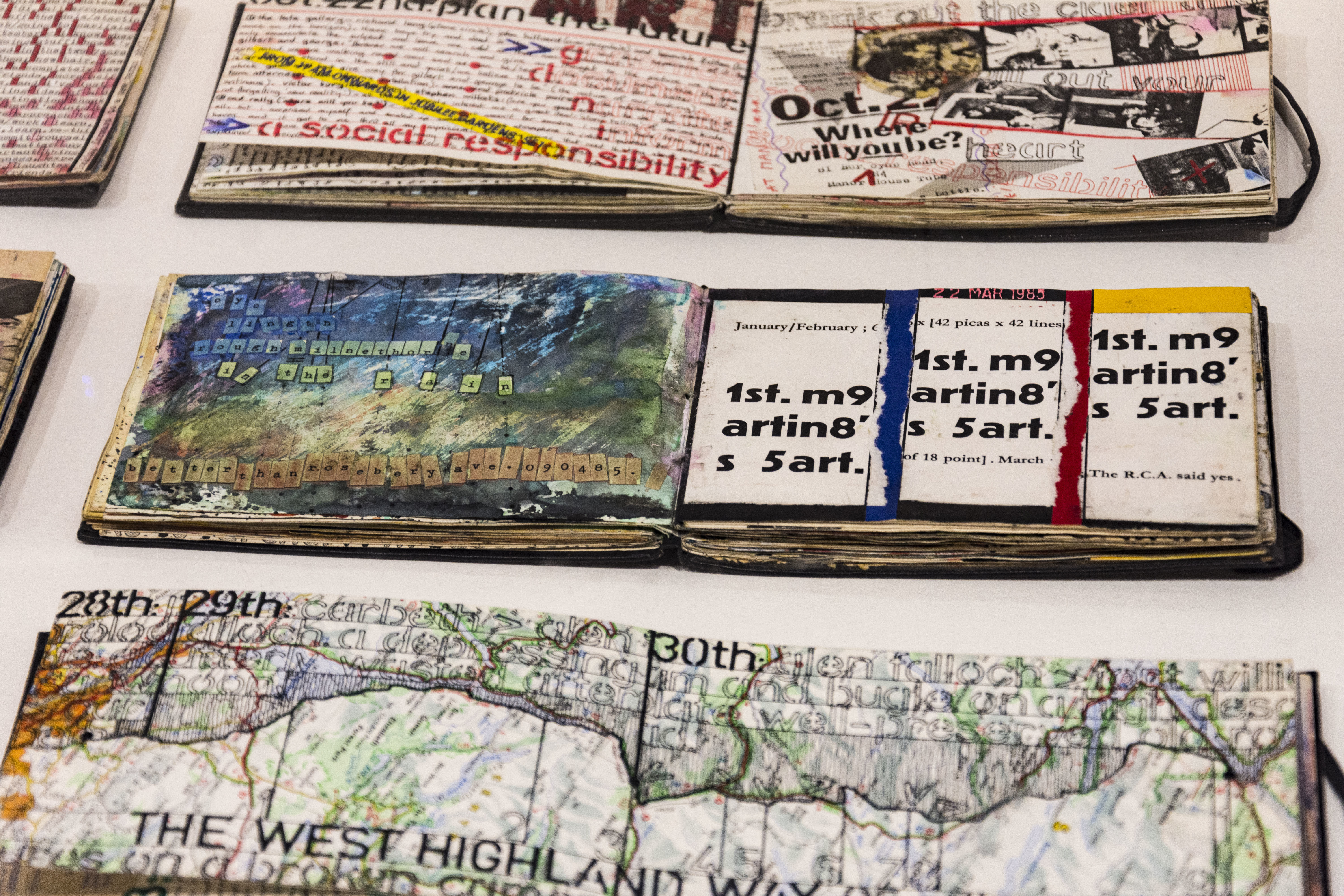
His college study culminates in his thesis, which to my eyes sets the typographic approach for most of the next 30 years. Complicated clashing grids, intricately arranged type, visually sumptuous, it slows reading right down, you are made to read almost word by word. Instead of editing sequentially into one easily followed text, Phil lets the texts all speak to one another. Over there is Moholgy-Nagy, here is Kurt Schwitters talking of design as art, epitomised in himself, ‘i’.
Vitrine with miscellaneous books, including a seventeenth-century treatise on horse breeding, plus covers from the Penguin ‘Great Ideas’ series. Photograph by Gary Wallis.
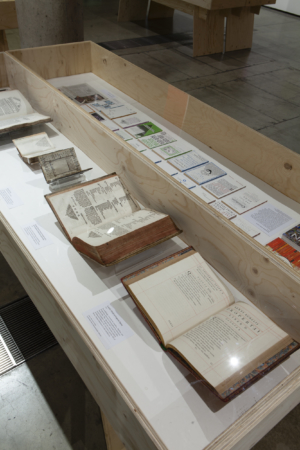
In the vitrines, the curators have placed historic tomes by Baskerville and Aldus and other to show the complexity of their layout: text set in shapes, hanging-shoulder annotation, initial caps, illuminations, ‘sigla’ abbreviations, superscript glosses, very odd line-breaks in impossibly long words (Latin breaks wherever you like, whereas English usually breaks at the root word). I have never studied the typography of previous eras so closely. It was second nature to Phil, who trained as a priest before going to art college.
He took cues from this sophistication. He borrowed from the richness and wide range of devices developed over millennia.
Items collected by Phil Baines for the Central Lettering Record at CSM and for home. Photograph by Jamie Johnson.
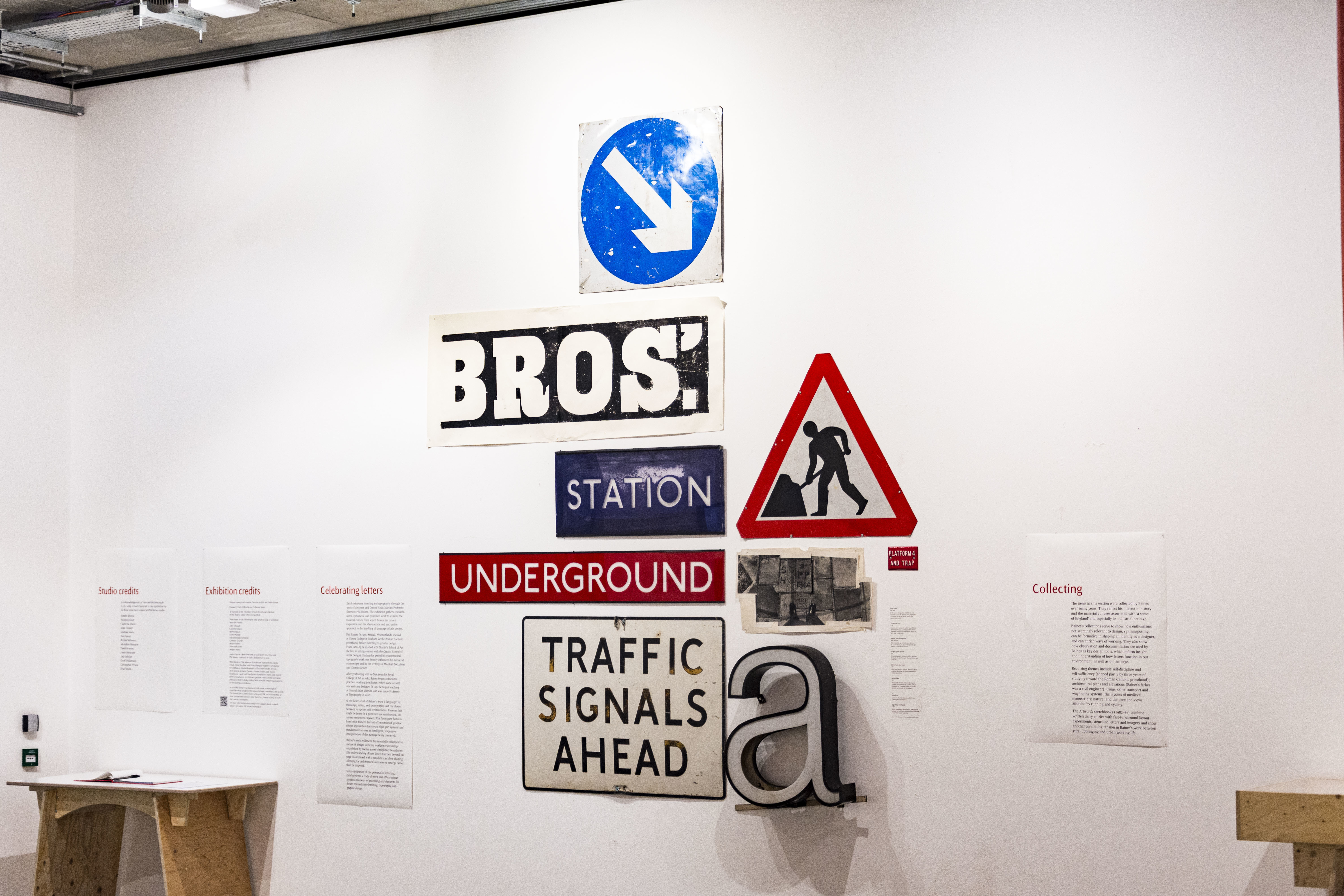
Vitrine with miscellaneous items including stencils, British Rail ashtrays and a copy of Eye 34, open at a spread from Baines’s article ‘A design (to sign roads by)’. Photograph by Gary Wallis.
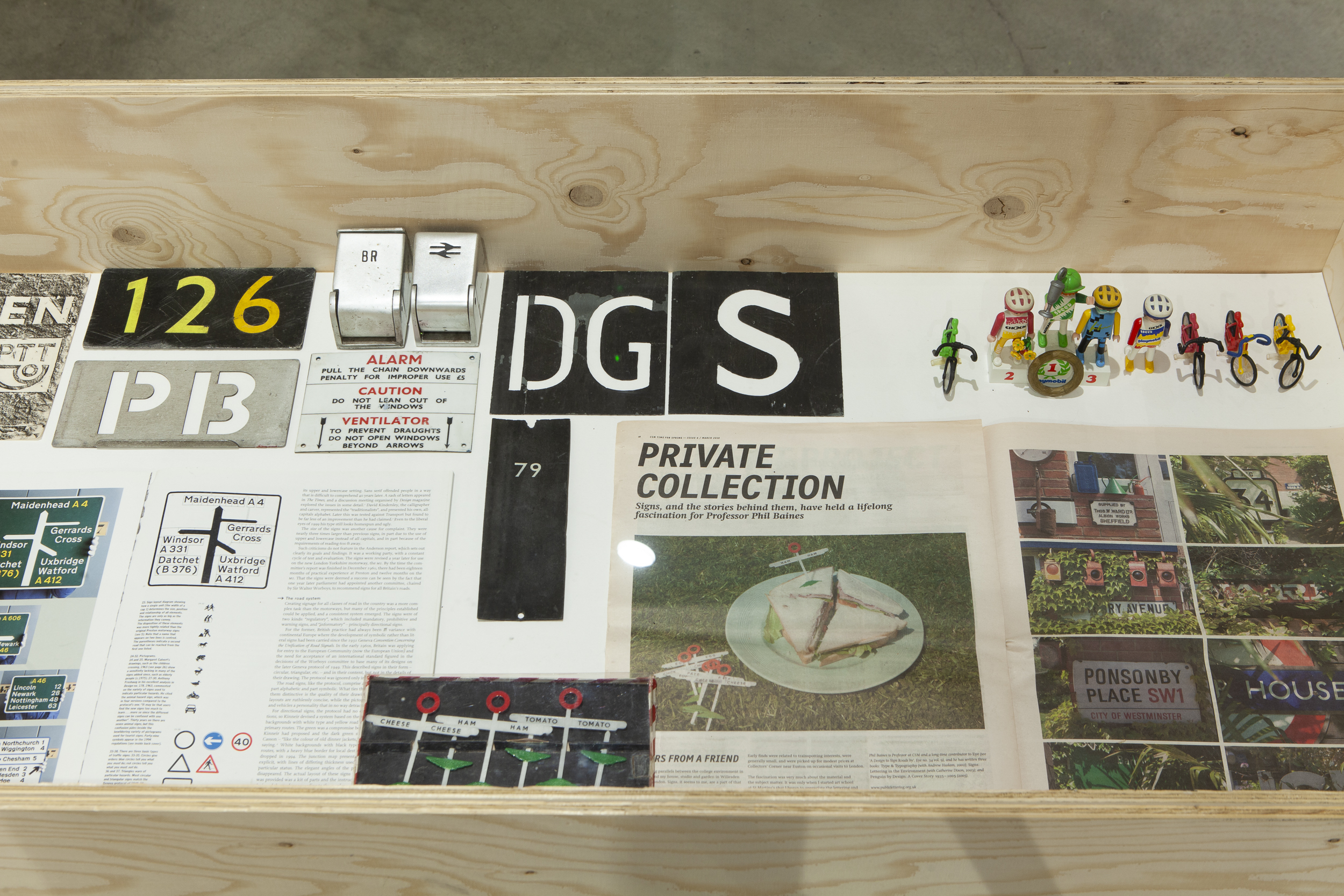
He understood that design is best practiced not following a ‘static set of rules’ but, a much wider path. ‘Ours is not an age of books, but we can learn from that tradition … neither is ours an era of dramatic reconstruction and growth, as characterised the golden age of Modernism, but we must have a similar faith in what we are doing. Graphic design is about the ordering of information … We design not for future historians to judge or condemn, but for an audience with immediate needs and expectations.’ Most graphic designers design as if graphic design began in 1950. Phil Baines is telling us: look at everything closely, learn lessons from everywhere.
Tavistock Square memorial lettering, a collaboration with architects Carmody Groarke, 2009. Photograph by Jamie Johnson. See ‘7 July memorial in Hyde Park’ on the Eye blog.
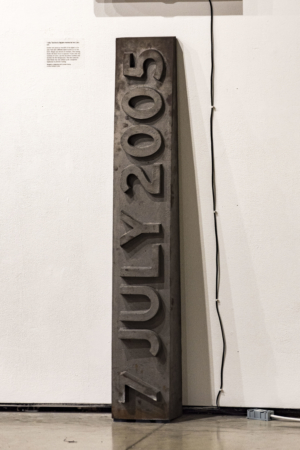
The highlights of the show are so frequent it is hard to choose.
The work with architects Carmody Groarke, monuments cast in steel and carved out of granite, his carefully gauged type perfectly integrated. The fat books showing the golden era of Penguin and Puffin book covers (both must-owns). The book of vernacular street signs, compiled with Catherine Dixon, a catalogue of the sheer variety of the graphic design that enriches every city.
Paschal candle, designed and self-published by Phil Baines, 2000, showing his Vere Dignum typeface, based on early Christian inscriptional sources.

But it is the Paschal candles that serve as his most successful combination of tradition and innovation. He designed and printed the wrappers to send as gifts to friends and those who had gone on to complete their seminary training. They hang, red, black, gold and waxy white, glorious three-dimensional objects. In these he achieved his own version of Kurt Schwitters ‘i’: drawing on the past, but also fresh and personal. This is unquestionably typography as art.
Snapshot of a Phil Baines tutorial with students (including Jack Schulze, later of Berg, back centre, see Eye 80 and James King, back right).
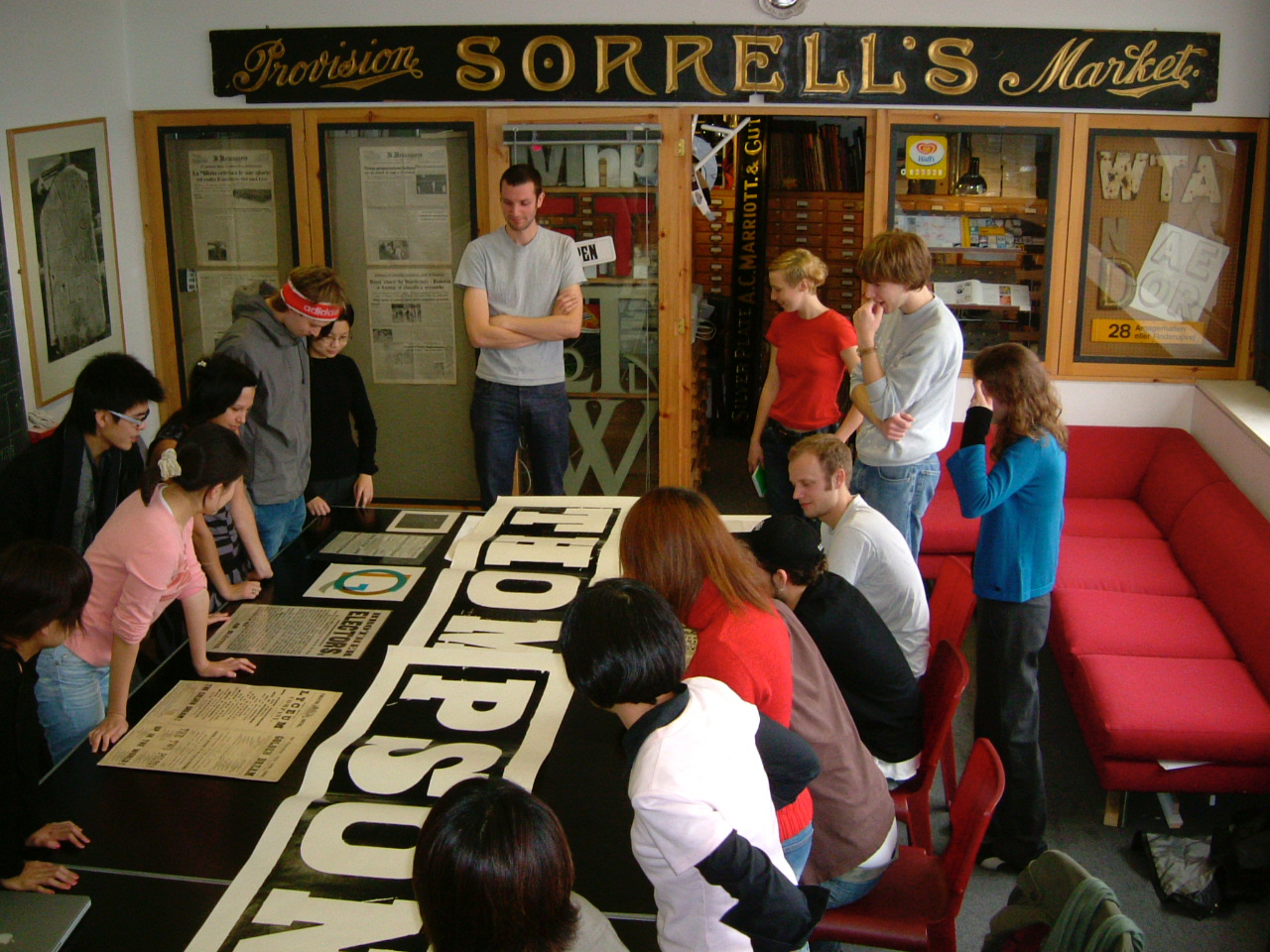
I am jealous of his students: now a real force in the design world. They got at length what any of us visiting the exhibition can only get a taste of. Phil throwing his infinite arms around everything graphic design has been, an inclusive embrace that leaves nothing out. And he shows us how to revel in the joy of it all. Hallelujah.
Anyone interested in Phil Baines, as well as the exhibition, you should really start with Chris Wilson’s Reputations interview (in Eye 69, 2008), link below, which carefully walks you through his career and key projects (although it necessarily misses out the past fifteen years).
Phil Baines. Degree shows poster, St Martin’s School of Art, 1985. Printed silkscreen and using only Jakob Erbar’s eponymous 1922 face.
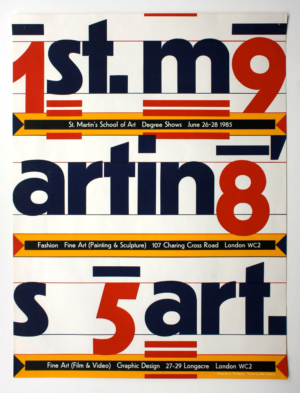
Spread from Anne Bean’s Autobituary, Matt’s Gallery, 2006. Baines’s use of perforated inner pages allowed the book to be machine-bound.
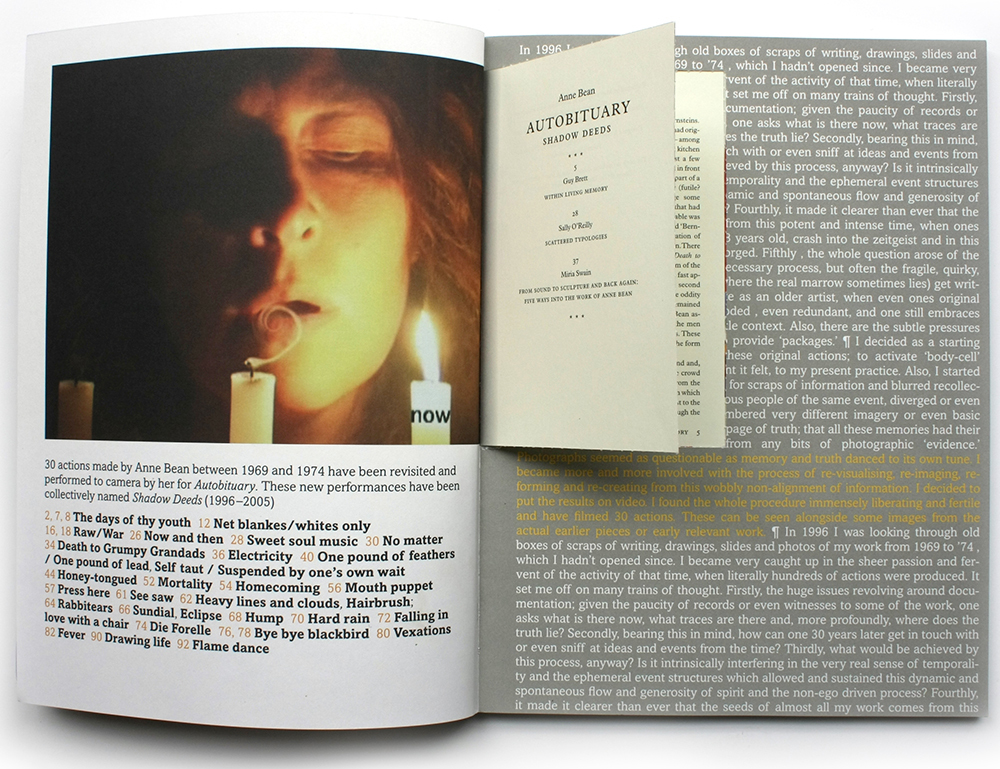
Baines’s identity for Berg, co-founded by Jack Schulze. Photo by Gary Wallis.
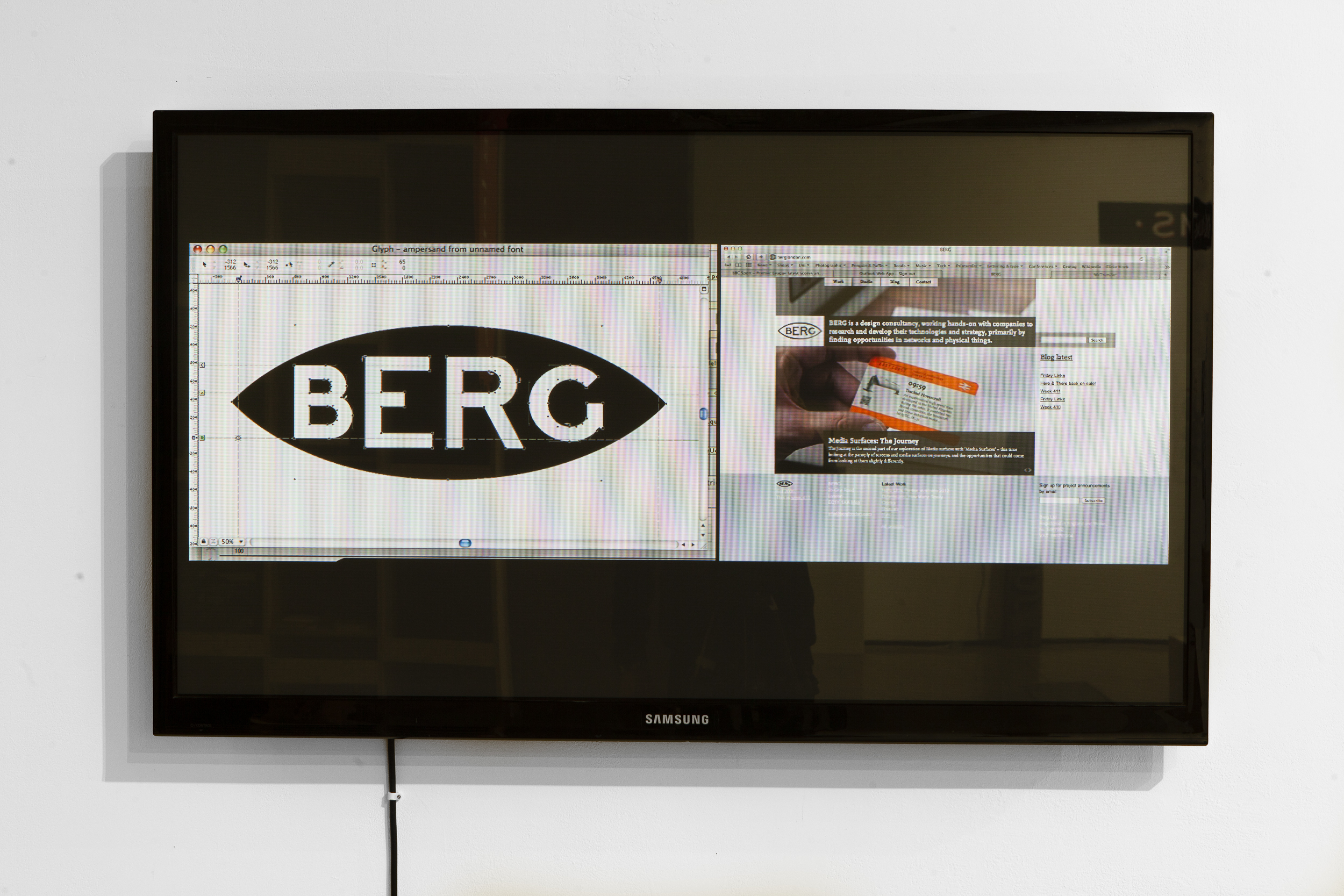
Spread from notebook. Photo by Gary Wallis.
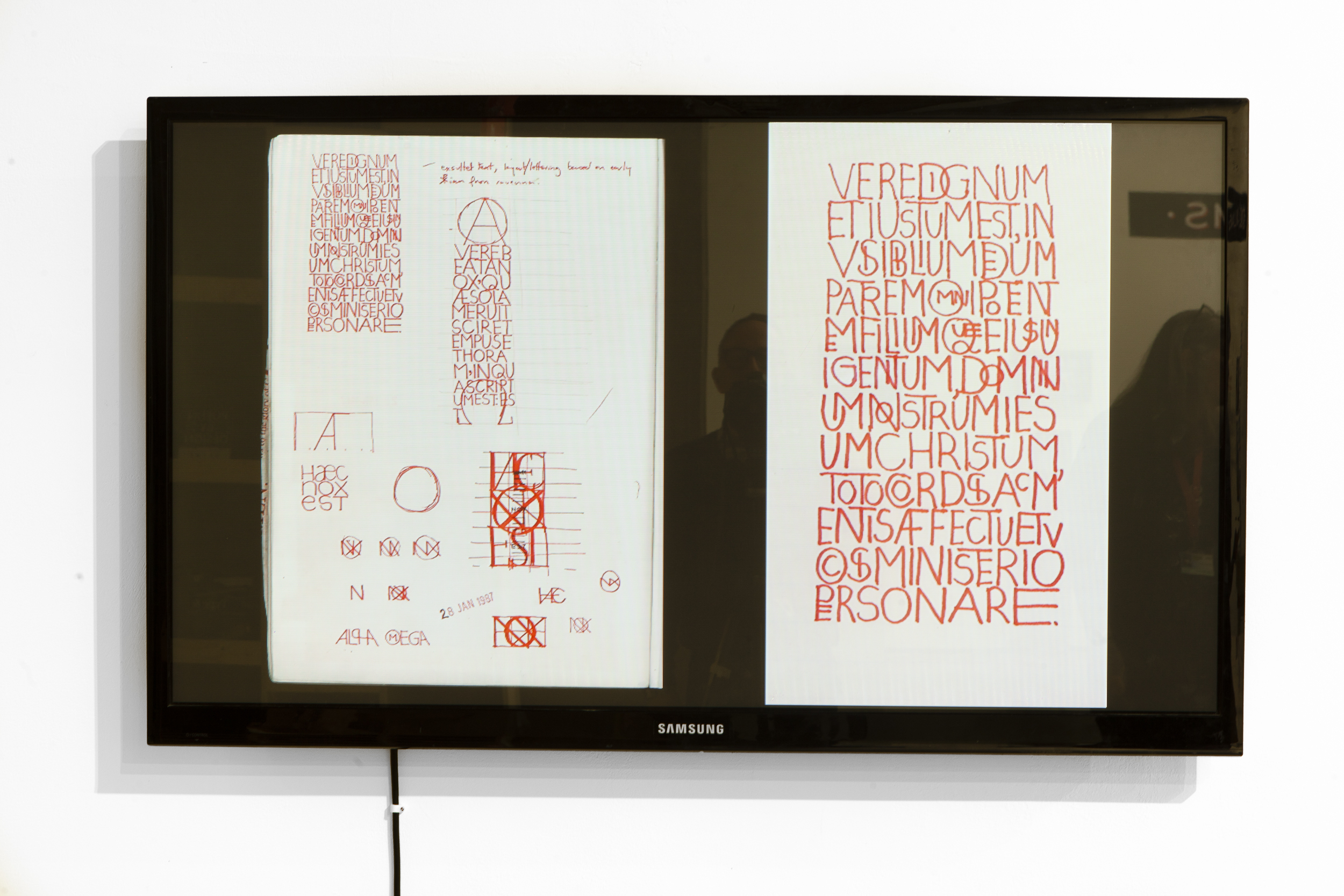
Glyph. Photo by Gary Wallis.
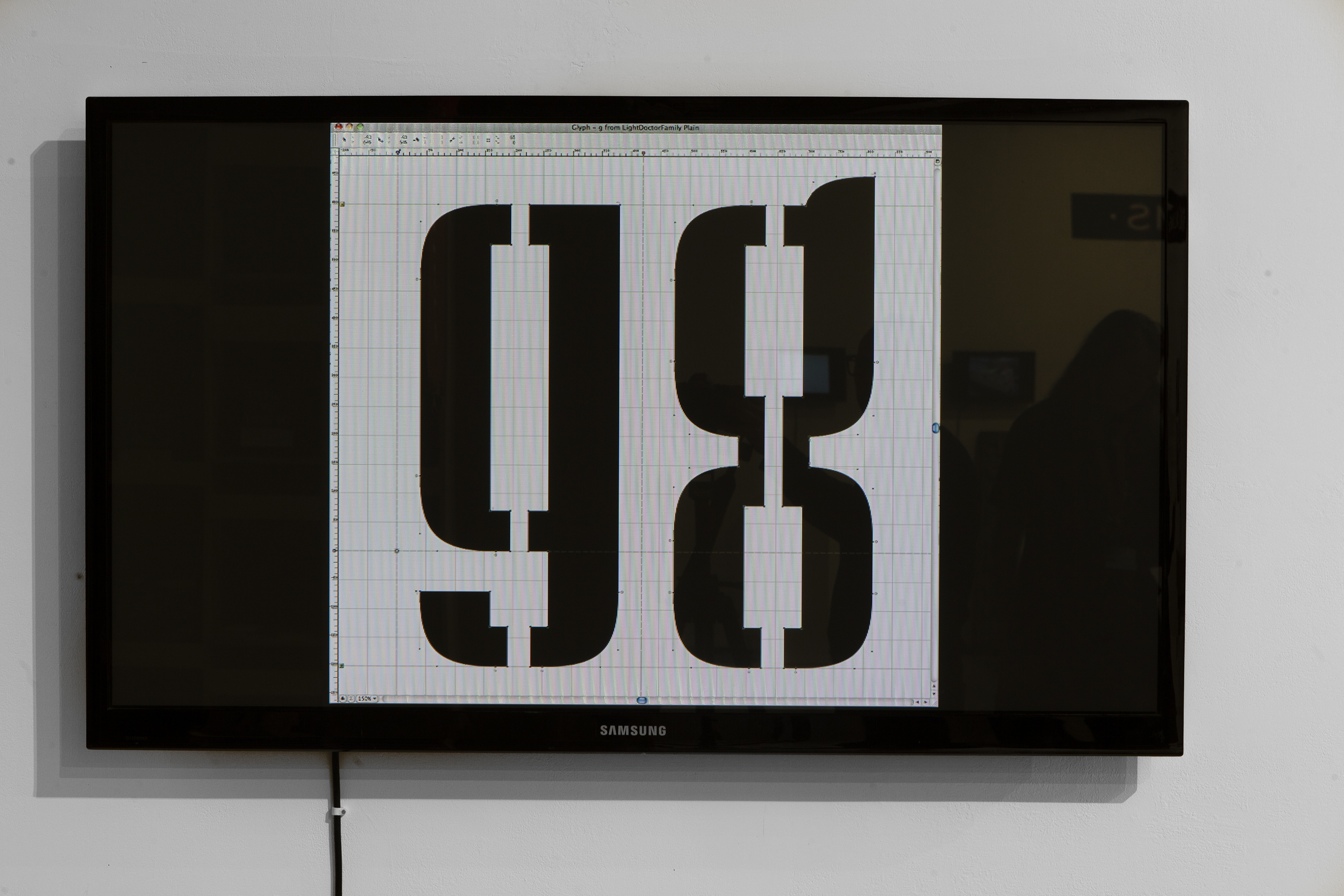
Quentin Newark, designer, writer, co-founder of Atelier Works, London
Eye is the world’s most beautiful and collectable graphic design journal, published for professional designers, students and anyone interested in critical, informed writing about graphic design and visual culture. It is available from all good design bookshops and online at the Eye shop, where you can buy subscriptions and single issues.
Links
Reputations: Phil Baines. Interview by Chris Wilson in Eye 69, 2008.
‘Extol: Phil Baines Celebrating Letters’ at the Lethaby Gallery, CSM
Take a typographic walk around Bloomsbury with Phil Baines at publiclettering.org.uk
Soundcloud snippets of Phil talking through his career
‘7 July memorial in Hyde Park’ on the Eye blog.
Phil Baines’s writing for Eye
